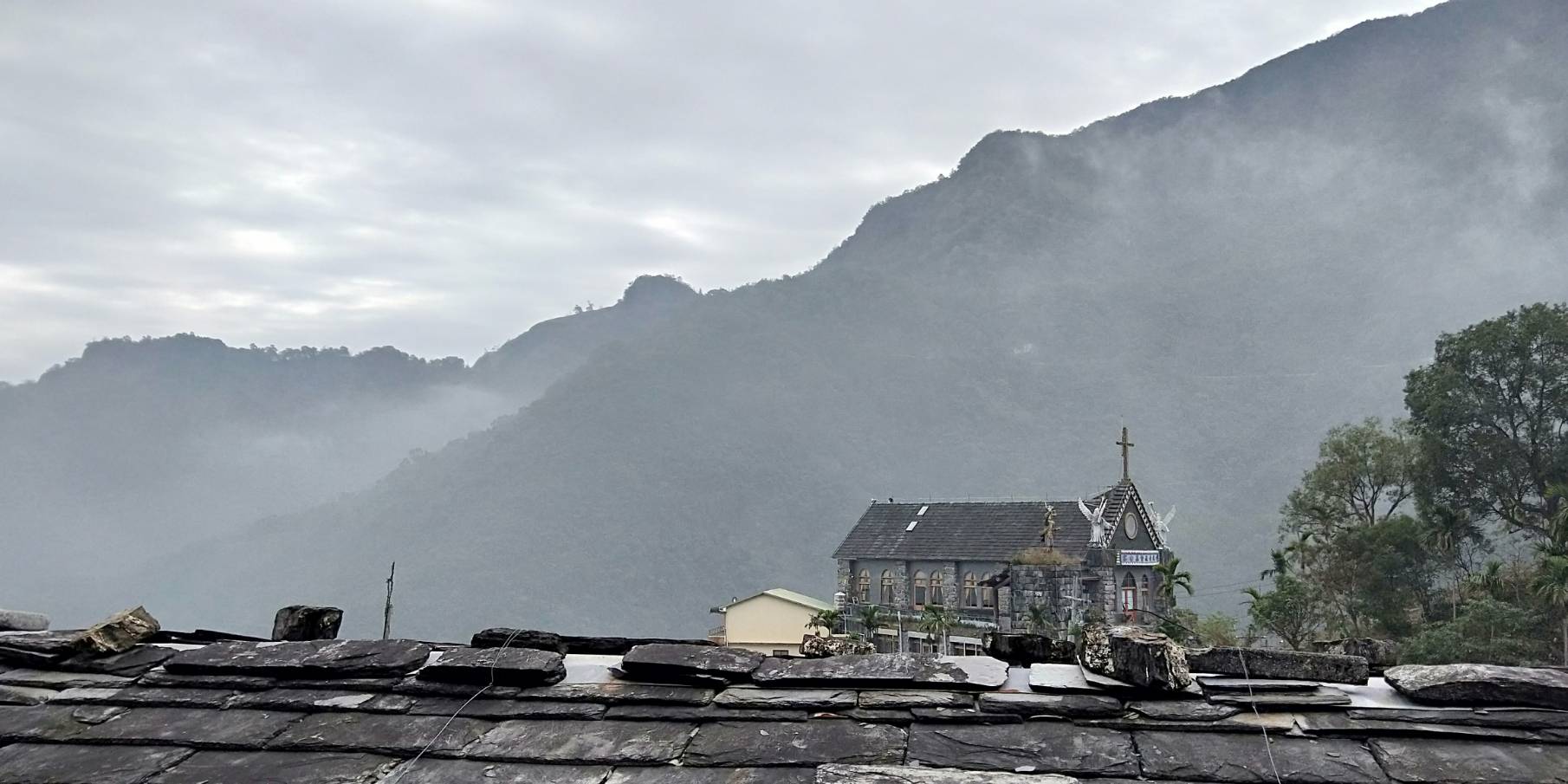Associate Professor of the Department of Photonics Chin-Ping Yu and Assistant Professor Rungudru Pacekele (Qing-Xiong Ba) of the Department of Sociology started a cross-disciplinary course on the technologies of Taiwan’s indigenous peoples and took the students on a field trip to the mountains of Wutai Township in Pingtung County. Under the guidance of two indigenous hunters – Palripilripi Kangilane and Ragilyane Kadrarulane, the students learned indigenous people’s traditional knowledge on hunting and ecology: how to set traps, use hunting tools and camouflage techniques, and identify wildlife paths.

The students of the cross-disciplinary course on the technologies of the indigenous peoples of Taiwan went on a field trip to the mountains of Wutai Township in Pingtung County to learn about indigenous people’s traditional knowledge on hunting and ecology.
Professor Pacekele pointed out that men play many roles in the Rukai indigenous community in Wutai Township and have to perform labor-intensive tasks, such as building houses and farming. The typhoon season is farmers’ leisure time and during this period, men go to the forests to observe plants, animals, and arable land, and, in the long term, gain rich knowledge on its ecology. The two hunters showed how to turn available materials into daily life tools without the help of modern technology. For example, stones of a certain texture and shape are suitable for striking, while others – for fixing the bases of recurve bows or setting traps; branches of trees can be cleverly used to make tools for hooking and pulling. When learning how to set a trap, the students picked up such indigenous knowledge as camouflage techniques, control of the force applied, identification of wildlife paths, and choosing recurve bows of the right tenacity.
Thanks to the explanations of the hunters of the Rukai community, the students learned how to turn natural environmental resources into useful tools for hunting and for use in everyday life and discovered the science behind the tools. Professor Yu said that the participating students were amazed at how inconspicuous these life hacks are and at the technological concepts behind them. The students understood the Rukai culture more in-depth by learning about the environmental sustainability of the Rukai indigenous peoples, as well as the supporting culture and spirituality: the reverence and gratitude to the forest, collective participation in the hunt, and sharing the fruits of the hunt with community members.
“The students particularly liked learning about plants and their application,” emphasized Professor Pacekele. The plants are used to set traps and decorate women’s head ornaments worn at home, during farming work, and other activities. Head ornaments have many purposes. Ferns, sweet potato stems and leaves, and orchids can give shade. Plants that emit fragrance, such as young leaves of the Chinese goldthread or maple and orchids, can be used to make forehead ornaments, while mallotus leaves are useful for sun protection and bark fibers of hibiscus can be used to make clothes or for binding materials.





